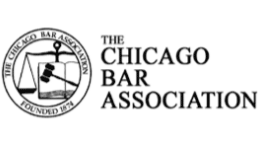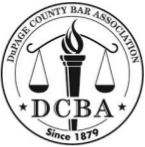Which Divorce Option Is Right for You?

Naperville, Illinois Divorce Attorney Helps You Make the Right Choice
Getting divorced is never easy. Divorce is a process to legally end a marriage. A final judgment of divorce decides the issues of dividing property, maintenance (financial support for a spouse), legal custody/placement of children, child support and other related topics. Illinois law regarding divorce is outlined in the Illinois Marriage and Dissolution of Marriage Act (IMDMA), 750 ILCS 5/.
Divorce Options In Naperville, Illinois
There are a number of procedural models, or methods, that may be used to resolve these issues. The difference lies in the amount of attorney and court involvement, conflict, and cost. Each issue — for example, maintenance — may be resolved either by reaching an agreement that must be approved by the court or by having a contested hearing after which a judge makes a decision. The models include:
- Traditional negotiation / litigation
- Collaborative law divorce
- Divorce Mediation
- Uncontested divorce
- Pro se divorce
To schedule a free initial consultation with principal attorney Ronald L. Hendrix, call 630-355-7776 or 815-722-7050 or contact us. Our legal team can help you determine which approach is right for you. We serve clients throughout DuPage County and surrounding counties in Illinois.
What Approach Is Right For You?
The approach that you decide to take in your divorce is very important and involves a number of considerations. At the Law Office of Ronald L. Hendrix, P.C., we are able to give you the guidance to help you choose the approach that is best for you in your divorce.
Traditional Negotiation And Litigation
Litigation is the traditional divorce process. Both parties hire attorneys who provide legal advice and represent their clients in negotiations and court hearings. This model is adversarial; each attorney advocates positions based on the personal wants, needs, and viewpoints of his or her client. The parties communicate mainly through their attorneys, rather than directly with each other, regarding their positions, proposals, and counter-proposals.
The process may involve the use of formal legal procedures, known as "discovery," to obtain financial and other relevant information. Discovery may include the use of depositions (a formal taking of testimony before a court reporter) and the subpoenaing of documents or other material believed to be relevant to the issues. Each party may also hire experts to support his or her position. These experts may include psychologists, real estate and personal property appraisers, business valuation specialists, accountants, and others.
Most litigation divorces are eventually settled, but substantial time, money, and emotion have been spent in the meantime. In addition, parties often find later that they are dissatisfied with the outcome. They are likely to return to court in the future to change the outcome or resolve disputes.
Collaborative Law Divorce
In collaborative law, the traditional approach of bargaining from a specific position, backed by threats of litigation and court intervention, is replaced by an approach that settles cases respectfully. The approach meets the needs of both parties and the children. It still involves legal counsel, but it eliminates the threat or fear of court intervention at any stage.
This dispute resolution process is based on a pledge in which both parties, and their attorneys, contractually agree that the collaborative trained attorneys will not go to court. The key ingredient of collaborative law is that the negotiation between the parties takes place in four-way meetings where both parties and their attorneys are present. All parties sign a participation agreement that sets forth the principles and guidelines for collaborative family law.
The collaborative law approach to divorce is based on three principles:
- A pledge not to go to court
- An honest exchange of information by both spouses
- A solution that takes into account the highest priorities of each spouse and the children
The key element of the collaborative law process is a commitment by the parties to work toward a negotiated settlement in a structured, non-adversarial setting that protects privacy and confidentiality, rather than resorting to litigation or court intervention. And even though the process is much gentler and well-received by those who embrace it, the collaborative process is not necessarily the best approach for everyone. The divorcing parties must be willing to work honestly, openly, and in good faith to arrive at a fair resolution without court involvement or intervention, and the attorneys should be specially trained in collaborative law.
If appropriate, the collaborative divorce process may involve a team approach, including financial advisers and mental health professionals as coaches and child specialists. The goal of the experts is to educate the parties and explore settlement options to meet the needs of both parties and their children.
This process encourages creative problem solving, win-win negotiations and resolutions that meet the needs of all members of the family. International experience indicates that the collaborative divorce process produces greater satisfaction of the parties, better results for children, and participants who are less likely to return to court to litigate issues in the future. The most significant aspect is that the parties are directly involved in the process and retain control over their outcome.
Mediation
In mediation, the parties hire a neutral third party to assist them in reaching agreements about their divorce. The mediator can provide information about the divorce process and guide a discussion to help resolve issues. The mediator does not need to be a lawyer and does not represent either party. Whether the mediator is a lawyer or not, the mediator cannot provide legal advice.
Mediation may occur with parties who have hired attorneys or parties who are not represented. The parties communicate with each other directly, in the presence of the mediator. The goal of mediation is to allow parties to reach agreements that meet the needs of both parties and their children without the financial and emotional cost of a court battle.
If the parties use mediation without attorneys, they are responsible for preparing all the required forms for the court. The parties must also appear in court for their final hearing to have their agreement approved and the divorce judgment granted.
Uncontested Divorce
In an uncontested divorce, the couple decides to only hire one attorney. Since an attorney can only represent one party, the couple decides which one of them will hire the attorney.
As its name states, the couple is deciding to go this route because all issues have been decided or they feel that the remaining issues can be easily resolved. In many cases, the couple may have already gone to mediation and resolved the issues or components necessary for their divorce, so they are now comfortable with only one of them hiring an attorney and discussing issues with that attorney since all issues are resolved (uncontested). This is sometimes referred to as an "Agreed Upon Divorce."
In most cases, there are easy divisions of property and the couple is able to work effectively with each other to resolve any remaining issues. If a couple has decided how they will be dividing their property, and even how they want to parent their children, they may be able to do an uncontested divorce. And, if they have successfully mediated their divorce or are considering doing their divorce "pro se," then the assistance of one attorney using the uncontested approach may be appropriate for them.
Pro Se Divorce
In a pro se divorce, the parties represent themselves and do not hire attorneys. They proceed on their own to draft and file the necessary court documents, including:
- The summons and petition
- Financial disclosure statements
- Any motions
- The marital settlement agreement, if any
- The final judgment of divorce.
The divorcing husband and wife must either work out an agreement together or present their legal disputes to the court. If an issue is not agreed upon, the parties have to be prepared to act as their own representatives, meaning they must call witnesses, prepare exhibits, ask questions of the opposing party, and tell the court why their request for specific orders should be granted, within specific procedural requirements. Pro se divorce generally works well when the parties agree and the issues are simple, such as in cases with little property and no children.
For experienced family law counsel, contact the Law Office of Ronald L. Hendrix, P.C., in Naperville, Illinois, at 630-355-7776 or 815-722-7050

















